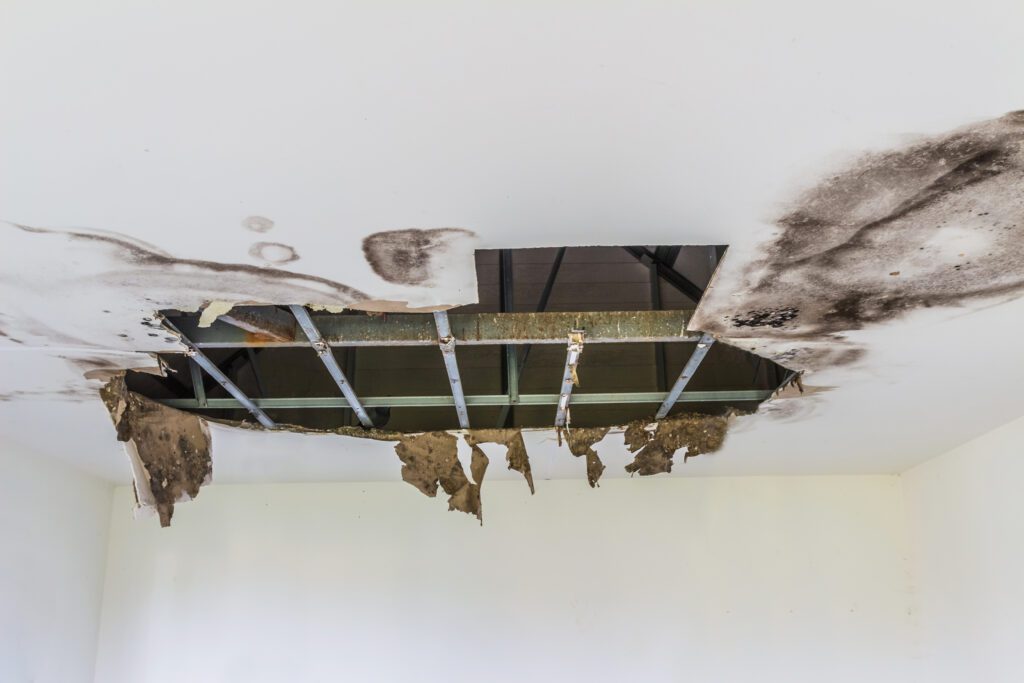If your walls are stained or hazy, there are a few easy steps you can take to restore your wall to its natural state.
Removing Drywall Damage
Clean up all debris from around the wall. With a damp sponge or cloth, remove any dust or debris built up underneath the drywall. If there is rubble under the floor, remove it as well. Use a wire brush or electric drill if necessary to get rid of any dirt or debris. Ensure all debris is removed, and then start scraping.
Level out the area you want to repair to paint over it once the damage is repaired. The damaged section should be raised higher than the surrounding area of drywall by 3-4 inches. Make sure to level by measuring with a level or using string and a pencil to draw lines on the wall where your boards are located.
Scrape and sand down any areas where there are discoloured spots or stains on your drywall. You can do it with a drywall knife, a curved scraper, or a wire brush attached to an electric drill.
Removing Spots and Stains
For stains on your walls, you can use toothpaste to scrub them away. However, you will need to get it wet first so the paste doesn’t scratch the drywall. Then, repeatedly, you may have to scrub for it to get rid of tough stains.
If you have a discoloured section of the drywall, you can use enamel paint or an acrylic primer. You may want to choose one that is made explicitly for drywall.
Once the stain or spot is removed, you can tape off the area you want to repair. A drop cloth or painter’s tarp will help protect your walls from any drips or spills when applying your paint.
After you have applied your paint, you will need to sand it smooth. Use a medium-grade sponge to do that.
Applying Spackle
You can also apply spackle to any areas of the drywall that are damaged and may be causing the discoloured area or stain. You should not remove the spackle once you have applied it because you will have another area that needs repair. You will have to cover it with drywall cement.
Drywall Repair and Touch-up
You should always wear gloves when you repair your wall. A mask may be necessary with a respirator. Once the repairs are finished, you can get rid of the drop cloth or tarp and paint your walls as usual. Even though you should reapply the paint, it is still safe to put up wallpaper if you choose to do that.
Using Fillers
You can also use a drywall filler instead of a spackle. It is handy if you only need to fill in a small hole. There are several kinds of spackle, and each has different qualities and capabilities you should know. You can use regular spackle if you only need to fill in holes that are less than one-eighth of an inch deep.
If you do something more extensive that requires multiple layers, you should consider using a joint drywall compound. Filler types will vary by surface area. However, you should always mix it with a hardener and let it sit for a minute before applying it.
Touch-ups and Repairs
If you notice a damaged piece of your drywall, you shouldn’t just ignore it. Instead, it would be best to take immediate action to repair the damage. While it’s true that not every damaged area requires attention, there are signs which will signal you if the situation warrants repair.
For example, if a wall develops a rough spot that catches your eyes and refuses to go away, it’s time to take action. The same goes for bulges along the wall surface or even areas where the texture is no longer smooth and uniform.
Another indication of drywall repair needed is water damage. For example, if you’ve recently had a roof leak or a bathtub overflow, you may notice some discolouration in the drywall. That’s a clear indication that it needs to be repaired as soon as possible.
Drywall Repair Course
Still, one of the best early indicators that your drywall needs to be repaired is if you notice cracks, small holes, and other damage. That’s especially true if those defects are developing in areas that people and children frequent.
A lot of people think that all cracked drywall needs to be replaced. However, that isn’t always necessary because you can repair them in many instances. First, you will need to pinpoint where the damage is and what you will do about it.
As mentioned, you can use spackle if you need to repair cracked drywall. You can even use the same material if you have been in a car accident or your cat made a mess of your ceiling.
CONCLUSION
These are just examples of when you might repair cracks or holes caused by water, although there are many other situations where drywall can fail without any problems that warrant repairs.
For that reason, you should call a qualified drywall contractor to repair that area right away before it accumulates more damage or gets worse.







